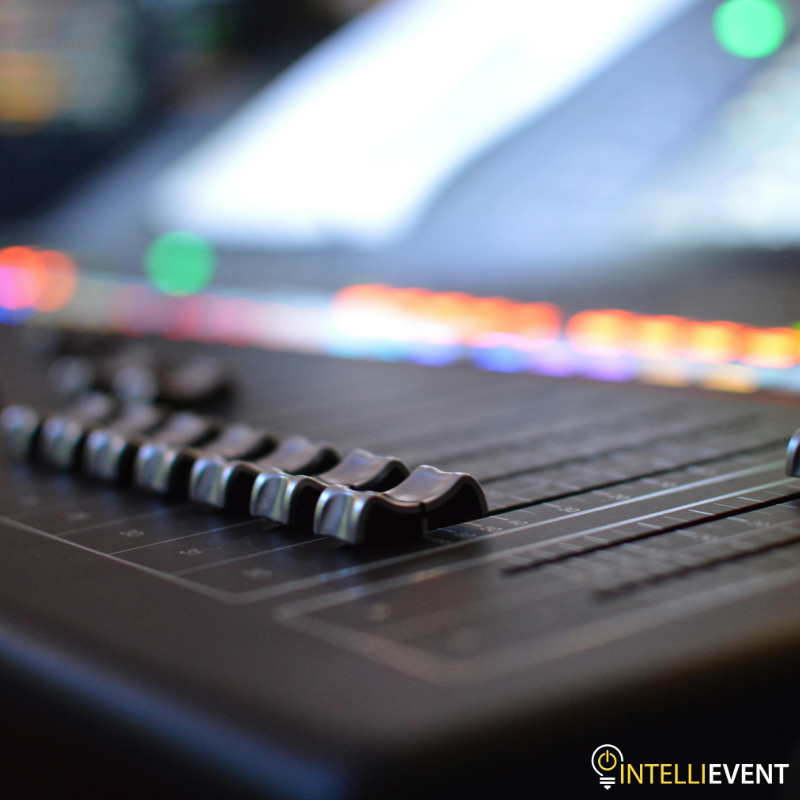Why audio visual charlotte nc is the backbone of well-executed events
Comprehending the Inclusion of Audio Visual Innovation in Today's Educational Environments
The integration of audio-visual innovation in instructional settings has actually transformed the training and discovering procedure. Educators currently have access to tools that deal with different learning styles, boosting trainee involvement and collaboration. Nonetheless, the consolidation of these modern technologies provides both opportunities and obstacles. Understanding exactly how to effectively carry out these tools is vital. What strategies can teachers utilize to optimize the advantages of audio-visual technology in their class?
The Advancement of Audio-Visual Technology in Education
As academic demands evolved over the decades, audio-visual modern technology underwent significant improvements that improved the understanding environment. At first, tools such as movie projectors and slide programs were the key means of integrating visual elements into class. These very early technologies given teachers with the capability to existing details dynamically, yet they were restricted in access and interactivity.
With the arrival of video clip cassette recorders in the 1970s, class started to integrate documented lessons, broadening the range of instructional sources. The introduction of desktop computers in the 1980s additional transformed this landscape, permitting the development of multimedia presentations and interactive knowing experiences.
The increase of the internet in the 1990s marked a pivotal minute, enabling real-time access to a riches of audio-visual materials. Today, digital tools such as interactive white boards and on-line discovering systems remain to improve the academic experience, fostering involvement and cooperation among students.
Benefits of Audio-Visual Tools for Diverse Understanding Styles
Audio-visual devices play an essential duty in accommodating diverse understanding designs by improving aesthetic knowing and improving acoustic interaction. By including photos, video clips, and noise, these innovations create an even more inclusive instructional setting. This diverse approach enables educators to attend to the varied choices and requirements of students properly.
Enhancing Visual Knowing
Involvement in the knowing procedure is substantially improved through using audio-visual devices, satisfying numerous learning designs. These devices, such as videos, infographics, and interactive discussions, provide aesthetic stimuli that help comprehension and retention. Visual students, specifically, gain from the incorporation of pictures and computer animations, which can simplify complicated principles and enhance understanding. In addition, audio-visual resources can highlight real-world applications, making discovering extra pertinent and interesting. By integrating shade, movement, and sound, teachers can develop a vibrant knowing atmosphere that records pupils' attention and promotes much deeper cognitive links. Inevitably, the calculated use audio-visual technology not only supports visual understanding but likewise enhances the general instructional experience for varied learners.
Improving Auditory Engagement
A substantial benefit of incorporating audio-visual tools in education and learning is their capacity to enhance auditory engagement among trainees. These tools, which include multimedia discussions, podcasts, and interactive sound elements, satisfy various learning styles, particularly benefiting auditory learners (audio visual charlotte nc). By integrating sound and narration, educators can create immersive experiences that catch students' interest and strengthen comprehension. This interaction is essential, as it fosters a much deeper understanding of the product and advertises retention. Furthermore, audio-visual devices can promote collective discovering environments, motivating trainees to take part in conversations and share their insights. Ultimately, the incorporation of audio-visual modern technology not just sustains auditory interaction but additionally improves the total educational experience, making discovering much more dynamic and effective for all pupils
Enhancing Engagement Via Interactive Learning

Additionally, gamification elements, such as quizzes and simulations, can boost inspiration and retention, making discovering more satisfying and effective. These approaches not just stimulate cognitive engagement but additionally accommodate diverse discovering designs, guaranteeing that all pupils can get involved meaningfully. As an outcome, interactive knowing atmospheres cultivate a sense of community and belonging, eventually causing boosted scholastic results. With the assimilation of audio aesthetic technology, educators can transform standard class right into vibrant spaces where students flourish and actively shape their academic journeys.
Connecting Theory and Practice With Multimedia Resources
Multimedia sources serve as a critical web link between academic ideas and functional application in academic settings. By improving interaction, promoting collective discovering experiences, and sustaining varied understanding designs, these devices produce a much more inclusive and dynamic learning environment - audio visual charlotte nc. This approach not just cultivates much deeper understanding however likewise prepares students for real-world challenges

Enhancing Involvement With Multimedia
Interaction in instructional setups substantially boosts when instructors integrate multimedia resources into their training methods. Using video clips, podcasts, and interactive discussions enhances the finding out experience, permitting students to connect with the product on multiple degrees. Multimedia resources provide to different learning styles, offering aesthetic, auditory, and kinesthetic stimulations that can hold trainees' focus better than typical lecture techniques. Additionally, these sources can simplify complicated concepts, making them a lot more available and remarkable. By integrating multimedia, instructors can create a vibrant classroom atmosphere that cultivates interest and encourages learners. Eventually, the tactical usage of audio-visual technology serves to link the gap in between academic understanding and practical application, enhancing the educational experience for both trainers and pupils.
Helping With Collaborative Learning Experiences
Many studies show that collective understanding experiences markedly enhance trainee end results when incorporated with multimedia resources. Multimedia tools help with interaction among trainees, enabling them to participate in problem-solving and vital thinking jointly. By utilizing video conferencing, collaborative platforms, and interactive presentations, educators create atmospheres for team effort and shared discovering. These modern technologies enable students to communicate their concepts efficiently and receive prompt comments, promoting a much deeper understanding of the subject. On top of that, multimedia sources can provide complex principles in more absorbable styles, advertising conversation read more and collaboration. Because of this, the combination of joint learning and audio-visual innovation not just improves the academic experience but likewise prepares trainees for real-world teamwork characteristics, emphasizing the value of participation and collective knowledge building.
Supporting Diverse Learning Styles
While traditional training techniques commonly deal with a restricted variety of learning choices, the combination of audio-visual technology provides a much more inclusive approach to education and learning. By employing multimedia sources such as videos, interactive simulations, and digital discussions, instructors can address different learning designs, including aesthetic, auditory, and kinesthetic. This flexibility permits separated direction, making it possible for students to engage with web content in manner ins which reverberate with their specific choices. Additionally, audio-visual devices can facilitate deeper understanding by giving multiple depictions of complicated ideas. Because of this, pupils that may have a hard time with conventional techniques can find different pathways to success, fostering a more equitable learning environment that sustains academic achievement for all learners.
Difficulties in Applying Audio-Visual Technology
Although audio-visual technology holds wonderful promise for enhancing educational experiences, its application often encounters considerable obstacles. One primary worry is the economic worry linked with getting and preserving such equipment, which can strain budget plans, especially in underfunded establishments. Furthermore, poor training for teachers can hinder effective integration, leaving them ill-prepared to use the technology totally. Technical concerns, such as software program breakdowns and compatibility troubles, might also disrupt lessons and annoy both educators and trainees. Differing levels of student access to technology outside the classroom can produce disparities in finding out chances. Lastly, the capacity for over-reliance on technology may interfere with important mentor techniques, ultimately restricting the academic experience. Addressing these challenges calls for an extensive method, including sufficient funding, expert growth, and fair access to resources, to guarantee that audio-visual innovation can be leveraged successfully in today's academic setups.
Ideal Practices for Integrating Modern Technology in the Classroom

In addition, cultivating an interactive environment with collective tools urges student involvement and involvement. Utilizing diverse audio-visual resources satisfies numerous finding out designs, accommodating visual, acoustic, and kinesthetic students. Frequently evaluating the effect of innovation on student learning helps teachers refine their methods and adjust to altering demands. Finally, including pupils in the option of modern technology promotes possession and inspiration. By sticking to these finest practices, teachers can produce a dynamic classroom environment that properly integrates modern technology and boosts the instructional experience for all students.
The Future of Audio-Visual Innovation in Education
As classrooms progressively accept innovation, the landscape of audio-visual tools in education and learning proceeds to advance (audio visual charlotte nc). Future improvements are expected to concentrate on better interactivity and customization, allowing instructors to customize discovering experiences to individual trainee needs. Advancements such as augmented fact (AR) and virtual reality (VR) will likely give immersive discovering environments, enhancing student interaction and understanding
Fabricated knowledge (AI) is poised to play a substantial role in audio-visual modern technology by using real-time feedback and adaptive understanding paths. This integration might help educators recognize and address student challenges better. Cloud-based platforms will certainly promote less complicated access to sources and partnership amongst pupils and educators, no matter of area.
Along with these technical developments, specialist growth for educators will be crucial, ensuring they are furnished to make use of these tools efficiently. Generally, the future of audio-visual modern technology in education guarantees to create even more vibrant, inclusive, and impactful understanding experiences.
Regularly Asked Concerns
How Can Teachers Select the Right Audio-Visual Tools for Their Classrooms?
Picking ideal audio-visual devices requires teachers to assess their educational objectives, consider trainee demands, review readily available technology, and seek suggestions from peers or professionals, making certain devices effectively boost knowing and involvement within their details class environment.
What Spending plan Factors to consider Are There for Executing Audio-Visual Technology?
Budget plan factors to consider for carrying out audio-visual technology include first purchase prices, maintenance expenditures, training for team, and possible software application licensing costs. Furthermore, lasting investment in updates and replacements need to additionally be factored into monetary preparation.
Are There Certain Training Resources for Teachers on Audio-Visual Tools?
Lots of organizations supply training resources for instructors on audio-visual devices, consisting of online programs, workshops, and educational overviews. These resources aim to improve instructors' skills and self-confidence in properly integrating innovation into their teaching techniques.
How Do We Determine the Effectiveness of Audio-Visual Technology in Learning?
Gauging the efficiency of audio-visual modern technology in discovering includes reviewing pupil engagement, comprehension, retention prices, and general academic performance. Studies, analyses, and empirical studies can give important insights right into its influence on educational results.
What Prevail Mistaken Beliefs Regarding Audio-Visual Modern Technology in Education?
Usual misunderstandings about audio-visual modern technology in education include the belief that it guarantees interaction and learning outcomes, as well as the presumption that all pupils benefit just as, ignoring individual understanding choices and needs.